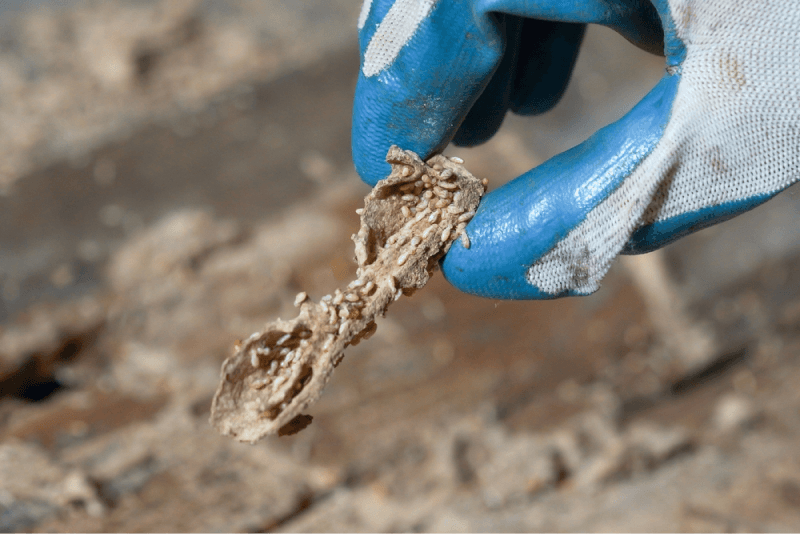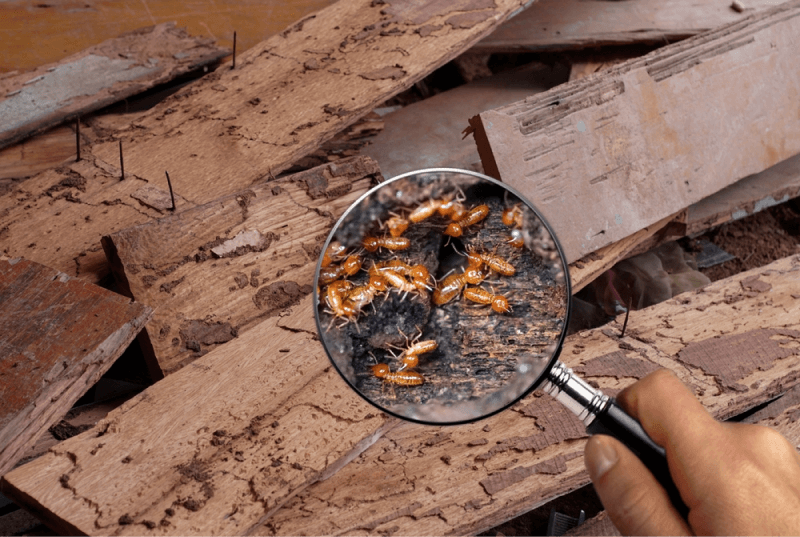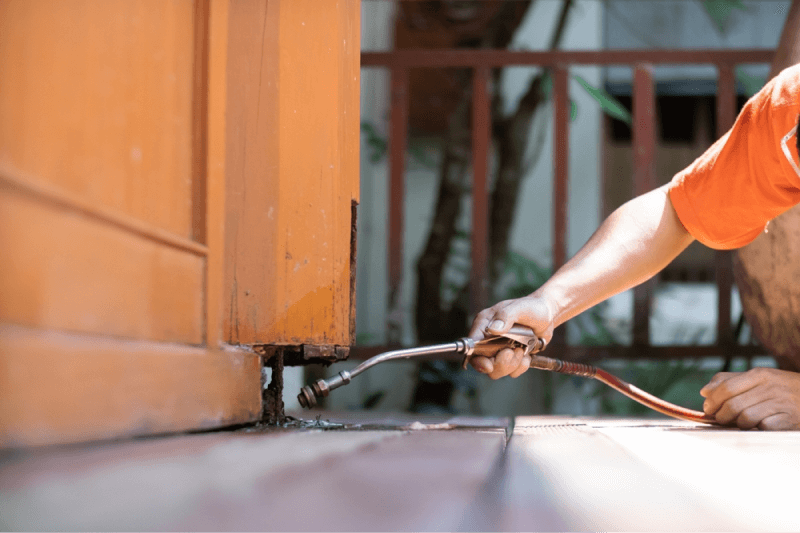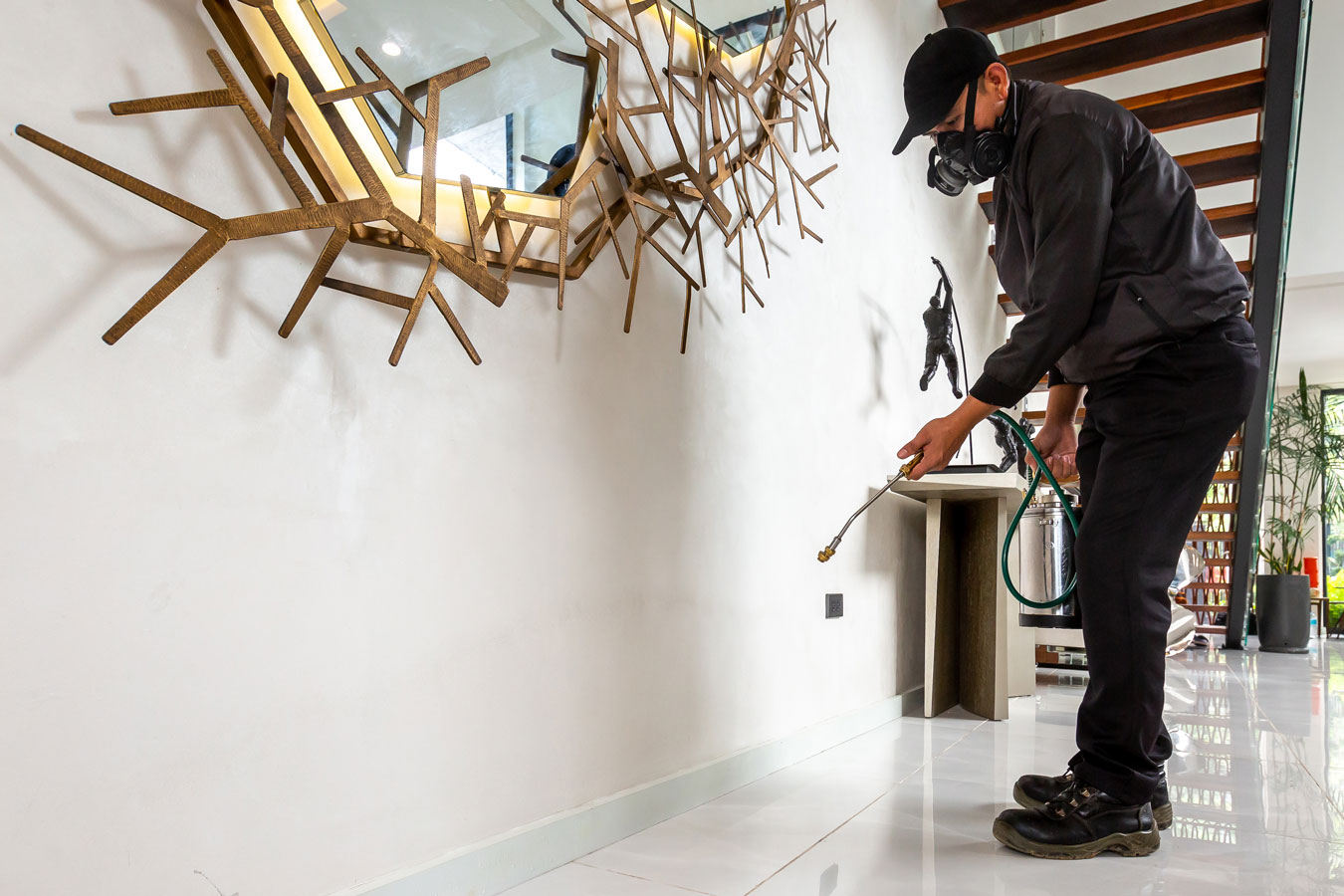
December 13, 2023
The 3 Most Common Types of Termites in Malaysia
As a tropical country, Malaysia’s environment serves as a potent nest for termites. As such, Malaysians struggle with termites attacking their homes and businesses, leaving millions worth of property damage. You may already know the signs of termite infestation, but did you know that there are different types of termites in Malaysia?
In this article, we’ll discuss what a termite is, the different species of termites in Malaysia, and the main ways to control them.
What is a Termite?
Termites are a type of insect that feeds on wood to turn it into soil. They play an important role in the ecosystem but they can be quite destructive when they target a home or building.
Termites live underground, in colonies that can sometimes range in the thousands or millions. Termites play different roles in their colony:
- Kings and queens reproduce to populate the colony. The queen is also responsible for determining the caste selection of the other termites.
- Workers are the largest population in a colony. They are responsible for gathering food and building the nest. Worker termites are the typical termites we see since they are the ones who often leave the colony to gather food.
- Soldiers are responsible for protecting the colony from other insects. They are built larger than the workers – they have a large head and mandibles.
- Alates are winged termites that you may find swarming. These are looking for a place to set up new colonies.

Common Types of Termites in Malaysia
Dubbed “silent destroyers,” termites chew through wooden structures for months unnoticed. It’s important to know how to identify the types of termites in Malaysia so you can treat them appropriately before they wreak havoc in your house or place of business.
Subterranean Termites
Subterranean termites are the most common termite species in Malaysia. These termites have a creamy white colour, with soldiers having darker brown heads. They are long and narrow, about 3.175 mm long, with six legs.
They live underground and build mud tubes — which are made with soil, wood, and termite saliva — to protect themselves from the air when gathering food. This species of termites is attracted to warm and moist environments common in tropical countries like Malaysia.
Subterranean termites are the most destructive type of termites. Firstly, a colony can range from a hundred thousand to a million termites, the majority of which are workers who will chew on any wood they find. Second, subterranean termites eat non-stop which is why they can cause significant damage in a short period.
Signs of Subterranean Termite Infestation
Subterranean termites may be attracted to fallen trees and may infest both inside and outside your home. An easy-to-spot sign of subterranean termite infestation is the presence of mud tubes or mounds around your property.
Occasionally, you may spot one or two alates during swarming season. But they do hide very well so you may also simply find discarded wings or piles of faeces that resemble sawdust around. So, if you see this in your home, it’s a good idea to schedule home pest control treatment immediately.
Other signs of infestation are soft or hollow wood, which can be dangerous as it can collapse and hurt someone. A termite-infested home may show signs of bubbling paint, blistering, or darkening of wood.
Drywood Termites
Drywood termites thrive in dry environments and thus, don’t need soil. They have creamy to light brown colours and can grow up to an inch long. Like subterranean termites, they are long, narrow, and oval, have six legs and alates have light brown wings.
A colony of drywood termites is significantly smaller than subterranean termites. They typically have only up to 2,500 members but they don’t have a caste system. Instead, immature termites gather food for the colony.
It may not be easy to identify this type of termite since they build nests and live inside wood in homes. They may build nests in high-level wooden structures, such as support beams, and may use these to transport dry wood. They consume anything made of cellulose, which means they can also damage furniture.
Drywood termites don’t break the surface of the wood so wooden structures may become hollow without you noticing.
Signs of Drywood Termite Infestation
Drywood termites may be a little harder to spot since they don’t build mounds and mud tunnels. However, drywood termites may leave droppings near their nest. The larger the pile of pellet-looking droppings is, the more serious the infestation.
Another sign of infestation is the presence of discarded wings, which means that an alate has found its mate and is building a nest nearby.
A unique sign of drywood termite infestation is soft clicking sounds coming from the walls. This sound may be more prominent during the night when it’s generally quieter. The clicking sound may come from soldier termites banging their heads or shaking their bodies to warn the colony of incoming danger. Another possible source of this sound could be worker termites munching on wood.
If wooden doors or windows seem to be stiff and difficult to open or close, this may also be a sign of drywood termite infestation. Drywood termites produce moisture that causes wood to warp. So, if doors and windows feel stiff even when it’s not raining, you may want to consider getting them checked by pest management services.
Dampwood Termites
Dampwood termites are the largest species of termites you’ll find in Malaysia. Soldiers and workers grow up to 20 mm while swarmers can be 25 mm long.
As its name suggests, dampwood termites consume and thrive on damp or decaying wood. They need high levels of moisture to survive.
These termites only invade damp or decaying wood, such as stumps or dead trees. However, they may also infest homes or infrastructures with decaying wooden structures. They may also thrive in other high-moisture areas like gutters and potentially cause plumbing issues.
Signs of Dampwood Termite Infestation
Dampwood termites are most likely to be found in areas with a lot of moisture, but they’re a lot more difficult to find than other types of termites.
Like other types of termites, they leave wood hollow or soft. Dampwood termite swarmers also shed wings after swarming season, so discarded wings are a sign of an infestation.
If you find discarded wood with velvety termite galleries, this is the work of Dampwood termites. You may also want to check the galleries for faecal pellets the termites use to seal in moisture in the infested wood.
Because it’s difficult to find dampwood termites, it is best practice to check any area or item that retains water or moisture. For businesses, an industrial pest control service provider would also suggest addressing moisture issues, such as leaky pipes to wooden pallets.

How to Control Different Types of Termites
Subterranean, drywood, and dampwood termites target different types of wood and thrive in unique environments. Thus, it’s important to know how to identify the type of infestation you’re dealing with and understand how to control different types of termites.
Regular Inspection
Regular monitoring and inspection are important in termite management. When done by professionals, they can check all the key areas that typically attract different species of termites.
They can also recommend next steps based on their findings and your needs. For example, our commercial pest control services recommend strategies that will have minimal effect on your business.
Anti-Termite Treatments
There are anti-termite treatments designed to be applied before and after construction. Both are necessary in preventing and managing termite issues.
Termite Baiting
Albeit not as quick as liquid treatments, this method is a low-maintenance way to protect your home or building from subterranean termites.
Physical Barrier
This is a physical barrier that keeps subterranean termites from penetrating a structure’s foundations.
Pre-Construction Termite Soil Treatment
A chemical treatment is applied under and around the base of a house or building prior to construction to keep termites from infesting from underground.
Wood Treatments
These are anti-termite treatments directly applied to wood.
Manage the Environment
Various types of termites are drawn to different environments, which is why it’s crucial to understand how to establish and maintain an environment that deters them. For subterranean and dampwood termites, that means managing moisture levels – addressing water or leak issues and removing rotting wood that can serve as a nest for termite colonies.

Managing Common Termite Species in Malaysia
The three main species of termites found in Malaysia – subterranean, drywood, and dampwood termites – have unique characteristics and environmental requirements. Consequently, they require unique management approaches.
As a homeowner or business owner, it’s important to be aware of the different termite species so you can stay alert and act at the first sign of an infestation. Doing so will help you protect your property and save you thousands in damages.
PestBusters is a renowned pest control company in Malaysia. We provide comprehensive pest control services for homes and businesses that prioritize the safety of people and the environment.
Discuss your termite problem with us, so we can tailor our services to ensure your home or business is termite-free. Schedule an appointment today!
Recent Posts
Looking for the highest standard of pest control services in Malaysia?
Contact us now for immediate and long-lasting solutions.
We cover the following areas:

* Please fill in the mandatory fields as required.











